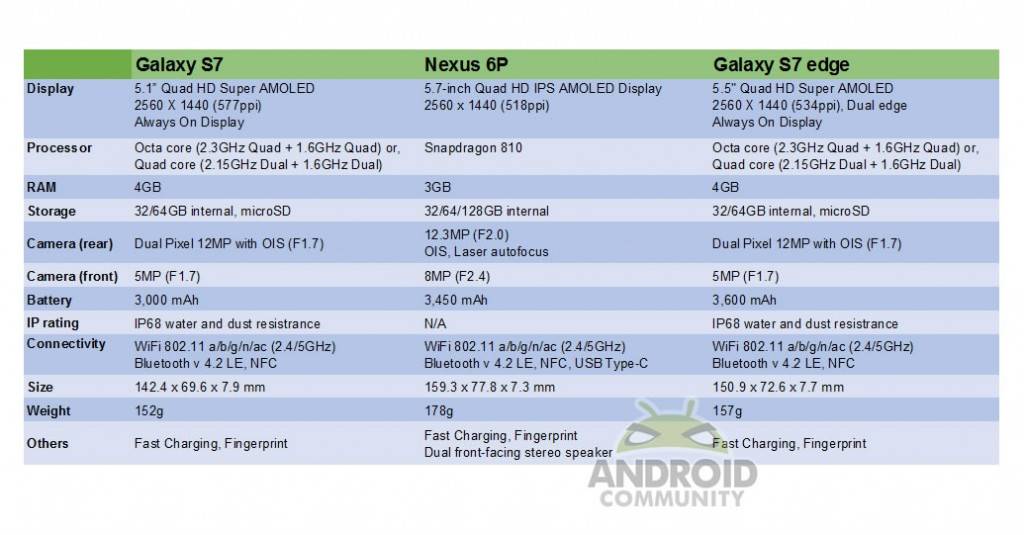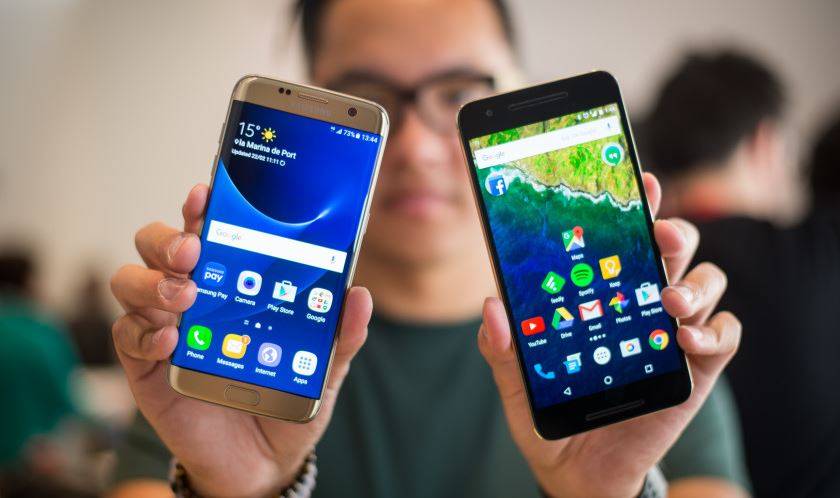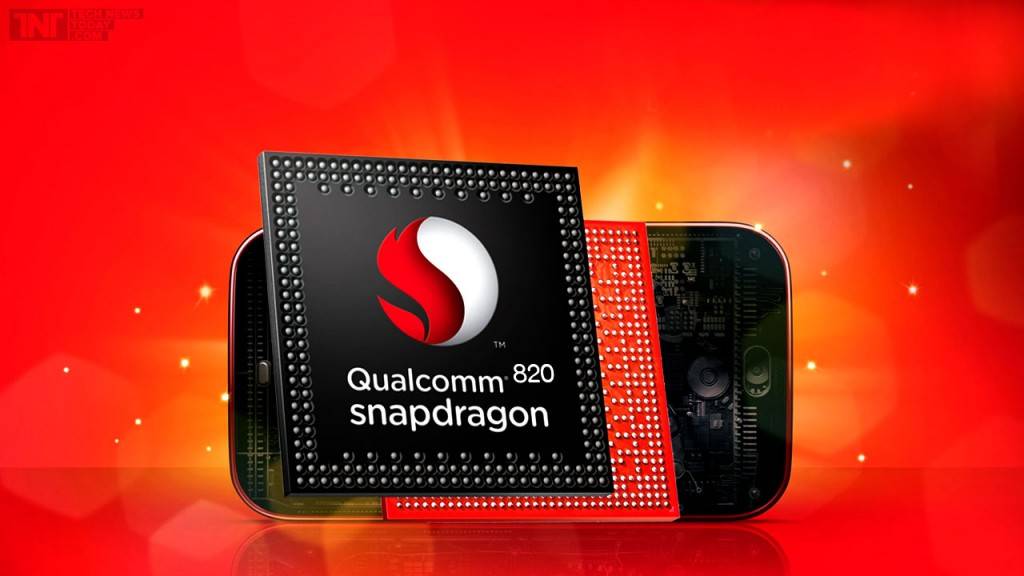
We’ve seen how the new Samsung Galaxy S7 measures up against the flagship models that were launched with it at the Mobile world Congress in Barcelona not a few weeks back. But we’re never going to run out of comparisons. So if you’re wondering how a stock Android 2015 flagship would do against a spanking new 2016 model, well, you’ve got what you want right here. We’re pitting the Google Nexus 6P, the first Nexus made by Chinese manufacturer Huawei, against the brand spanking new Samsung Galaxy S7. Will your 2015 model hold up? Or will you be tempted to get that upgrade now?

Display
As per usual, we start with the most noticeable element – the display. And right off the bat, there is a great disparity here. The Korean flagship sports a 5.1-inch screens at QHD (2560×1440) resolution, while the Nexus 6P has a humongous, almost phablet-sized 5.7-inch QHD display. Now, in terms of pixel density, the smaller display – in this case the Samsung’s at 577ppi – will have the best pixel density, and so will have the slightly punchier images. The Nexus 6P (at 518ppi) does not have a bad display to say the least, and it has more real estate to give to the user.

So the question boils down to the user, really. Do you want tight, punchy visuals? Or do you want more screen area to work with?
THE WINNER: We give this one to the Galaxy S7, on the basis of better quality images on a more pixel-dense display.
Physical Design
Because of the disparity in size, we understand that both the Samsung Galaxy S7 and the Nexus 6P will appeal to different audiences and their different usage and tastes. Both designs make use of glass and metal to give it that premium veneer, but the execution of the design is very much different.
While Galaxy S7 made some small design changes, it still resembles the Galaxy S6 a lot. Samsung seems to have this “no radical changes” rule in aesthetics. It did listen to the crowd in one area though, and we have to give them props for returning the microSD slot after ditching it in the Galaxy S6.

The Nexus 6P is running with that Robocop-like visor look at the top of its back panel to house the powerful camera module. That is something new that we saw from them last year, but that has also suffered in durability tests. The Galaxy S7 has been less aggressive in the way it designed the back, but the inward curve of the back plate makes the phone more handy.
On durability, we really don’t know much about the Galaxy S7 – no one has gotten on Youtube yet and filmed themselves dropping the phones and putting them in blenders and such, but you get the idea that the premium phone will survive a drop (although the glass covers will be the first to go if that happens, we imagine). The Nexus 6P on the other hand has had some problems with its durability being questioned – spontaneous cracks on the visor, bend tests and drop tests all told.
THE WINNER: The Samsung Galaxy S7 went conservative, but still has that class you want from a premium device. Put it beside a Nexus 6P, and the Huawei-made device looks visibly old.
Performance and Hardware
The chipset battle has been well won even before this comparison started. The Nexus 6P went with the latest and greatest of 2015 – which is the Qualcomm Snapdragon 810. The Samsung Galaxy S7 shows its edge by using this year’s latest version – the Qualcomm Snapdragon 820. On that count, even the least informed Android fan will have an idea which wins out.

In addition, Samsung Galaxy S7 variants will be supported by 4GB of LPDDR4 RAM (low power, double data rate RAM is Samsung technology). The Nexus 6P is supported by 3GB LPDDR3. On both counts (quantity and technology), the Nexus 6P is so “last year”.
THE WINNER: This is clearly a win for the Galaxy S7 by virtue of better technology. That is not to say that the Nexus 6P is a slow phone – not at all. The SD810 will still do the job for you, it’s just that the SD820 is undeniably better.
Camera
The Samsung Galaxy S7 came out with a camera module that has a lower pixel count – 12MP. But Samsung’s “Dual Pixel” technology carries the device through, as this means that for every pixel in an image, there are two light-sensitive photodiodes working together in the camera module. The result is faster focus speed all around, and better low-light imaging.

Samsung has been constantly at the top of our lists when it came to mobile cameras. The Nexus 6P is no slouch as well – its 12.3MP main camera is one of the best last year. But based on better and newer sensors, the Galaxy S7 is set to be one of the better smartphones this year when it comes to mobile camera imaging.
THE WINNER: We’ve seen a little of what the Galaxy S7 can do, and we’re convinced that it may become one of the year’s best. The Galaxy S7 will take this one over the Nexus 6P.
Battery
The Galaxy S7 has a 3,000mAh battery, and you pair that with a 5.1-inch QHD Super AMOLED display and it looks to be enough to last you the day, even with that “Always On” feature. 3,000mAh is the lower limit for flagships this year, it seems, and it was quite disappointing to see that Samsung didn’t push a little bit more for a bigger battery.
The Nexus 6P has a 3,450mAh battery, with Huawei hyping on the phone’s battery life. With the optimizations coming with Android Marshmallow, the result was pretty impressive. Even with the bigger screen, you know that the Nexus 6P’s battery can carry you through the day of normal usage, and then some. Samsung fans will be the first to admit that the brand doesn’t normally shout out “long battery life” anyways.
Both phones have some sort of fast/quick charging technology.
THE WINNER: This one should be taken by the Nexus 6P, on account of the battery with the bigger capacity.
Software
This might be the clincher for you, if you’re actually taking notes and thinking if you want that upgrade. Samsung has been stubborn in sticking with its much-maligned TouchWiz UI. Granted, they have been better at it this past year than at any point in time – the Galaxy S6’s version of TouchWiz was by far the best one, with the least bloatware installed.

The Nexus 6P is by design a stock Android device. You get stock Marshmallow at its best (and worst, but really not that much). Most Android purists will pick this on principle, but it really depends on your usage. For us, stock Android is still better than TouchWiz. Better yet, you get the latest updates to Android from Google, this being a flagship Nexus device.
WINNER: This might just be our preference, but we’re all for stock Android all the way, rather than TouchWiz. So the Nexus 6P will win here.
Other features, conclusion
Samsung liustend to the crowd when it brought back microSD expansion, so that is a plus for them. The Samsung Galaxy S7 also has IP68 water and dust resistance rating, but the Nexus 6P has no such feature. The Nexus 6P made the fingerprint sensor a fixture on Nexus devices, but this technology was already available last year with the Galaxy S6 as well. As for internal storage, you can get a Nexus 6P with 128GB right off the bat, so that counts for something. The Galaxy S7 tops out at 64GB – although 8GB of that goes to TouchWiz, which is a bummer.

So if we’re talking just about the specs and all things considered, who wins? The Samsung Galaxy S7 is the newer phone, and the newer specs will make it the better phone. That is not to say that you should chuck your Nexus 6P – what you have is still the flagship for Nexus phones, and it is still a very capable one. The thing is, most phones from 2015 will never have a chance against a newer phone from 2016, especially in the flagship niche. What do you think? Let us know in the comments.
[Some images from Android Authority]










I think you need to check back in your table. From what I’ve always read, the Nexus 6P does NOT have OIS.
I would think Price would be one of the big deciding factor.
I have the s7 edge and love it, but miss my Nexus 6 that I gave to my daughter. Kinda wish I got the 6p. Just something about stock os
So maybe i missed it, but which is actually snappier to use; 810 with stock Android, or the 820 with touchwiz??
I am going to extrapolate from previous iterations of Samsungs and Nexuses, that the latter is the one that is smoother and will probably last longer. You don’t really see people using their S4’s and S5’s anymore but there are a number of people still using their Nexus 5 devices.